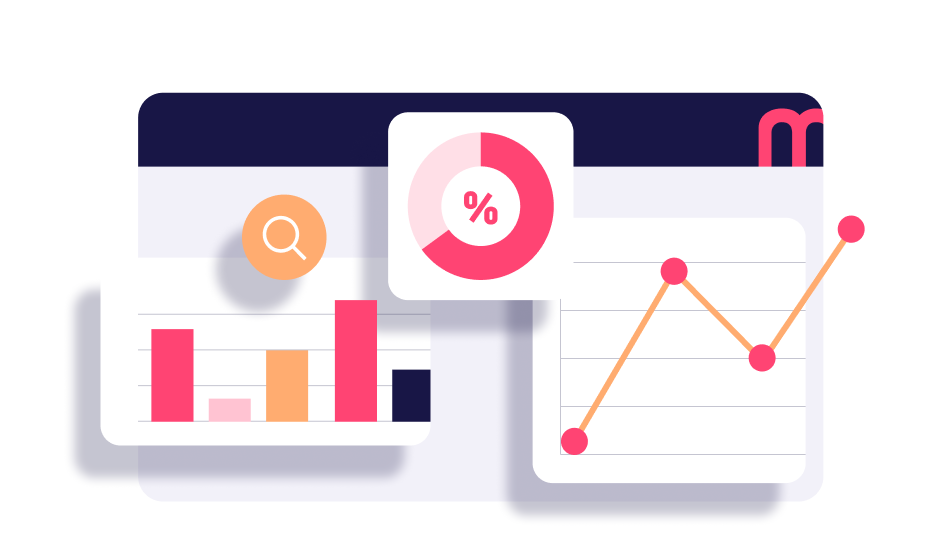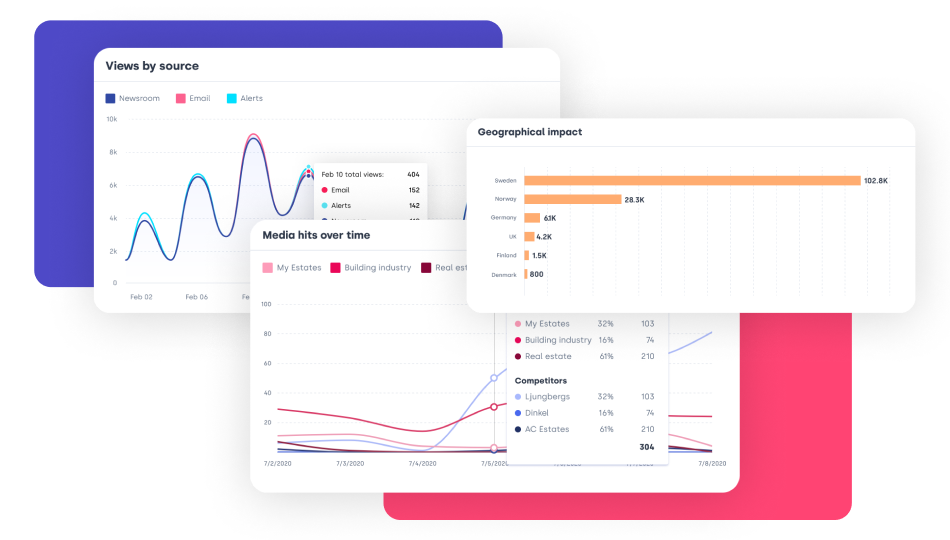How To Measure Your PR Effectively

If you’re struggling to prove the true value of your PR and communication efforts, you’re not alone. With tighter budgets and a growing emphasis on data-driven decision-making, PR professionals are under pressure to demonstrate the value of their work through measuring, reporting, and analysis. Here’s how to effectively measure and showcase your PR results.
In Mynewsdesk’s latest annual report State of Nordic PR & Communication 2024, 6 out of 10 PR and Communications professionals say that proving the value of their efforts is more critical than ever.

At the same time, PR and marketing budgets keep shrinking.
What do you make of that? Your expertise likely lies in communication and storytelling, not analysis and reporting.
For many, the easiest way to start measuring how their PR is making an impact on business results is by following these four steps:
- Choose your KPIs.
Decide upon a set of PR key performance indicators to measure regularly (we will explore these further down in this blog post). - Create an automated report.
Set up an automated (preferably AI-powered) reporting system to track these metrics for you. - Use AI for analysis.
Leverage AI to analyze PR performance. - Measure the value.
Compare the value of your PR results to their corresponding ad value.
But before we dive into how and what to measure, let’s start with why measuring and following up on your PR efforts is important.

Why You Need to Measure Your PR Results
Evaluate and Optimize Your PR
First and foremost, measuring and analyzing PR efforts allows you to gauge how effectively your brand is resonating with your target audience.
It helps you understand which parts of your strategy are working and which need tweaking, and helps you identify growth opportunities to strengthen your brand’s identity and reputation.
Secondly, delivering recurring PR reports to management that summarize the value of your efforts will demonstrate how your work contributes to overarching business goals. Which is definitely one of the most efficient ways to prove your value and justify your budget.
Work Data-Driven with Your PR Planning
If you haven’t begun monitoring your PR efforts yet, now is the time to start, to ensure you have the necessary data to analyze your performance and draw meaningful conclusions.
Analyzing your data is like having a GPS for your PR journey, constantly adjusting to navigate changing roads.
It guides you to allocate resources effectively, fine-tune your messaging, and choose the most impactful channels for your campaigns.
Now, let’s look into what to measure.
Measuring PR: What KPIs to track
To effectively measure and analyze your PR efforts, it’s essential to track the right KPIs. With hundreds of KPIs available, it’s crucial to select those that align with your business goals and market.
How do you know which KPIs to choose?
Instead of focusing on numbers, consider the questions you want to answer.
Here are some common questions and the corresponding KPIs to track:
- Question: How strong is my brand’s media presence compared to our competitors?
KPI: Share of Voice. (Your media mentions and share of mentions over time compared to your competitors.) - Question: How many people have been exposed to my messages?
KPI: Media reach. - Question: How much media coverage has my brand received?
KPI: Media coverage. - Question: How is my brand reputation developing?
KPI: Sentiment analysis. (If your brand is mentioned in a positive, negative, or neutral context.) - Question: How is my brand awareness growing?
KPI: Brand awareness. (Visibility through distribution, reach, and impact of mentions in the media over time. - Question: How much are people talking about my brand on social media?
KPI: Social media engagement. (Likes, shares, comments, and follower growth. Comments are an effective driver for increasing your reach organically.) - Question: How is my PR generating leads?
KPI: Lead generation. (Leads attributed to your PR activities and the conversion rate at different touchpoints. - Question: What is the monetary value of my PR results?
KPI: Ad value. (What the value of your results would have cost in paid advertising.)
The Top 3 KPIs to Measure Your PR
Let’s boil it down.
To keep it simple, the top three KPIs that usually provide a good picture of your PR performance are:
- Brand Awareness.
Reflects whether potential customers recognize and remember your brand, which is crucial for driving further engagement and conversions. - Share of Voice (SoV).
Indicates brand popularity and market presence, providing insights into your competitive positioning and how your marketing efforts compare to others in your industry. - Brand Reputation.
Showcases sentiment and trust, which significantly influence purchasing decisions. This KPI helps you manage PR crises, guide customer service improvements, and inform content strategies to address potential misunderstandings.

How To Measure the Quality of Your PR Results
Whether you want to understand the performance of a specific campaign or evaluate your PR efforts over time, it’s crucial to focus on evaluating quality.
Achieving a broad reach is great, but did you reach the right audience?
Quality means whether your efforts contribute to reaching your goals.
How do you analyze this?
It depends on the KPIs you’re measuring:
Example 1
If you measure brand reputation, determine whether your PR efforts have made the sentiment surrounding your brand more positive than before.
Example 2
If you measure Share of Voice, benchmark it against your competitors to see if you’re leading or need to focus on other areas first, such as brand awareness.
How to Interpret Your Results – And Plan Accordingly
Once you’ve established your KPIs, collected your data, and measured your results, it’s time to analyze them and draw conclusions.
Given the extensive number of data points you need to consolidate, utilizing an AI-powered PR software is often the easiest way to get a complete picture of your PR results.
It does the measurement and analysis for you within minutes (or even seconds), saving you a significant amount of time, stress, and – let’s be honest – tedious work.
Several PR software are available on the market. One comprehensive PR software is Mynewsdesk, offering media monitoring, PR reporting, and quick brand performance analysis in just one click through its Brand Report. Additionally, it calculates the corresponding monetary ad value of your PR efforts. But there are various options to consider.
Here are four popular PR software tools for monitoring and tracking your PR activities:
Conclusion
In this blog post, we described why measuring and analyzing your PR results is crucial:
- It showcases how effectively your brand is resonating with your target audience, and identifies areas of your strategy that need tweaking.
- It helps you make data-driven decisions and guides your planning and resource allocation.
- It helps you evaluate the monetary value of your PR efforts.
- It enables you to report back to your organization and management which helps you justify your budget and showcase your value.
We also explained what to measure. Out of eight common KPIs to track PR and brand performance, we highlighted the three most important ones:
- Brand Awareness.
- Share of Voice (SoV).
- Brand Reputation.
Finally, we recommended four popular PR software tools for monitoring and following up on your PR activities: Mynewsdesk, Meltwater, Cision, and Brandwatch.
Good luck with measuring your PR!